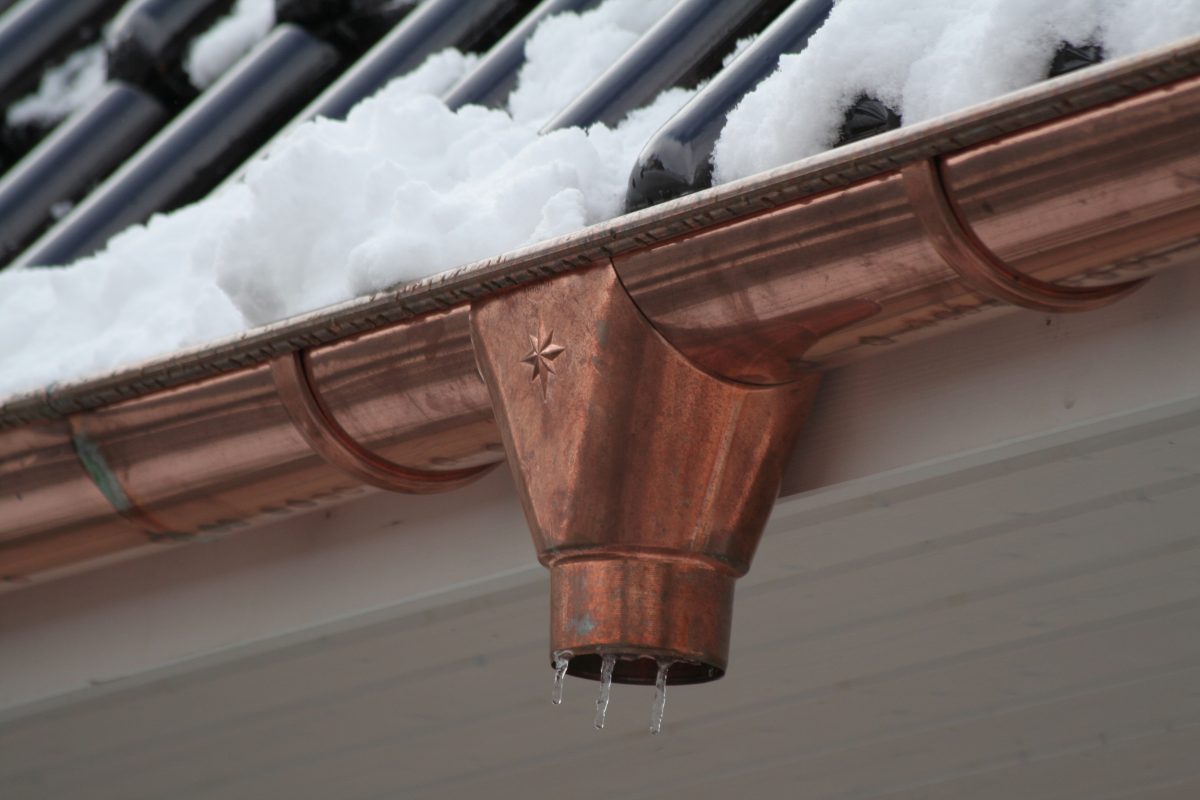

We may earn revenue from the products available on this page and participate in affiliate programs. Learn More ›
When it comes to protecting your home from water damage, the right rain gutter is essential. Gutters do much more than prevent water from splashing on you as you enter your home; they direct rainwater away from your foundation, walls, and roof. Improper drainage can lead to significant problems, such as basement flooding, foundation cracks, or mold growth, all of which can be costly and time-consuming to repair.
While the function of gutters is simple, the variety of materials and styles available can make choosing the right one more complex. From the durability of aluminum to the sleek appearance of copper, each material offers distinct advantages and potential drawbacks. Understanding these options can help you make an informed choice to protect your home effectively.
Parts of of Rain Gutters
As with most industries, the world of gutters has its own vocabulary and specific monikers for the various bits and pieces that comprise its workings. Learn more about the parts of gutters here.
- Downspouts: This is part of the gutter that runs vertically down the side of the house, transporting water from the roof to the ground or collection vessel.
- Downspout elbow: The downspout elbow is an angled piece of downspout that fits at the bottom of the downspout and directs water away from the home’s foundation.
- Pipe cleats: Pipe cleats secure the downspout to the house.
- End caps: End caps fit to the end of a gutter length and seal off the gutter.
- Hangers: Hangers are strips of metal that support the bottom of the gutter, preventing it from sagging.
- Ferrule: Ferrules are a hollow shaft that encloses the long screw (also known as a “spike”) that attaches the gutter to the house.
- Gutter: Gutters are sold in pieces of varying lengths. Each piece of gutter is called a section.
- Mitered corner: This is a corner piece of gutter that fits to the corner of the roof.
Types of Gutters
Seamless Gutter
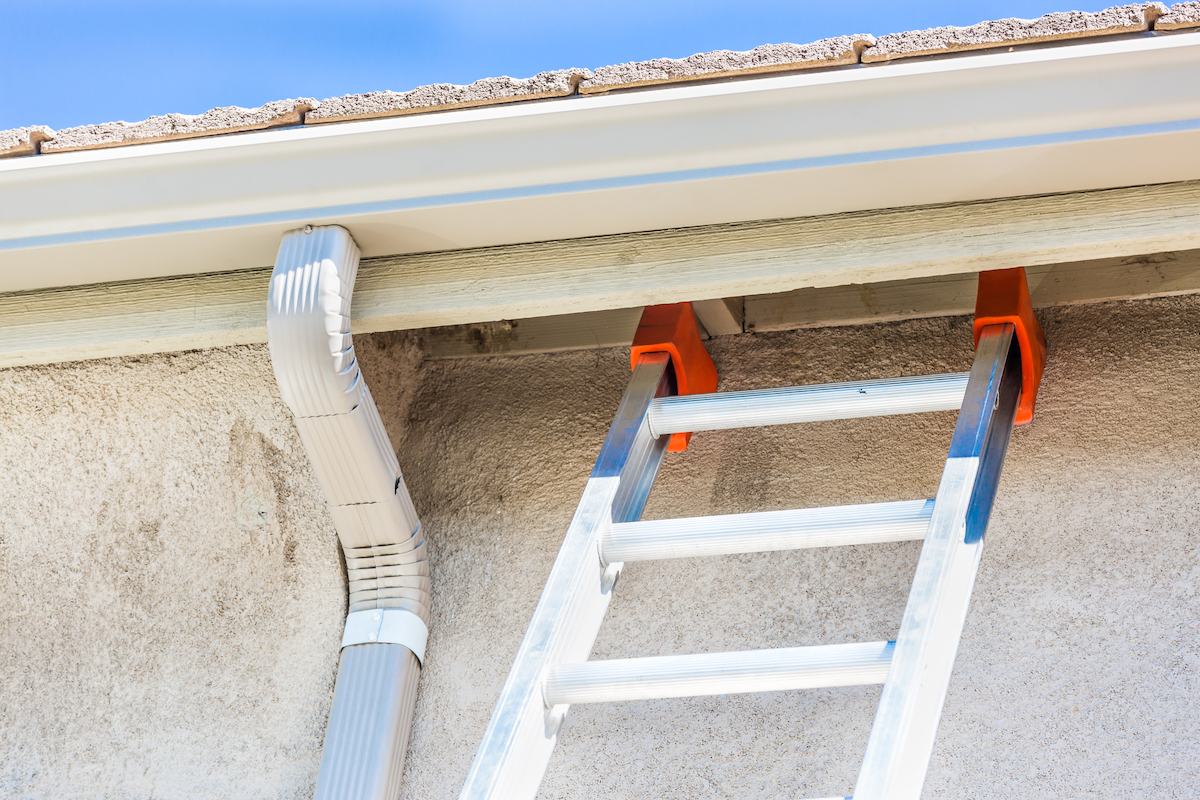
Seamless gutters are custom-made to fit the exact dimensions of your home, offering a continuous, streamlined design with no joints along the length of the gutter system. Unlike traditional sectional gutters, seamless gutters are typically made from materials like aluminum, copper, or steel, and are cut on-site to create a perfect fit. This reduces the chance of leaks and adds to the gutter system’s durability and aesthetic appeal.
Pros
- Seamless construction reduces leaks
- Fewer joints means less maintenance
- Tailored fit to home’s exact measurements
Cons
- Usually more expensive to install
- Seamless design means they’re difficult to repair
K-Style Gutter
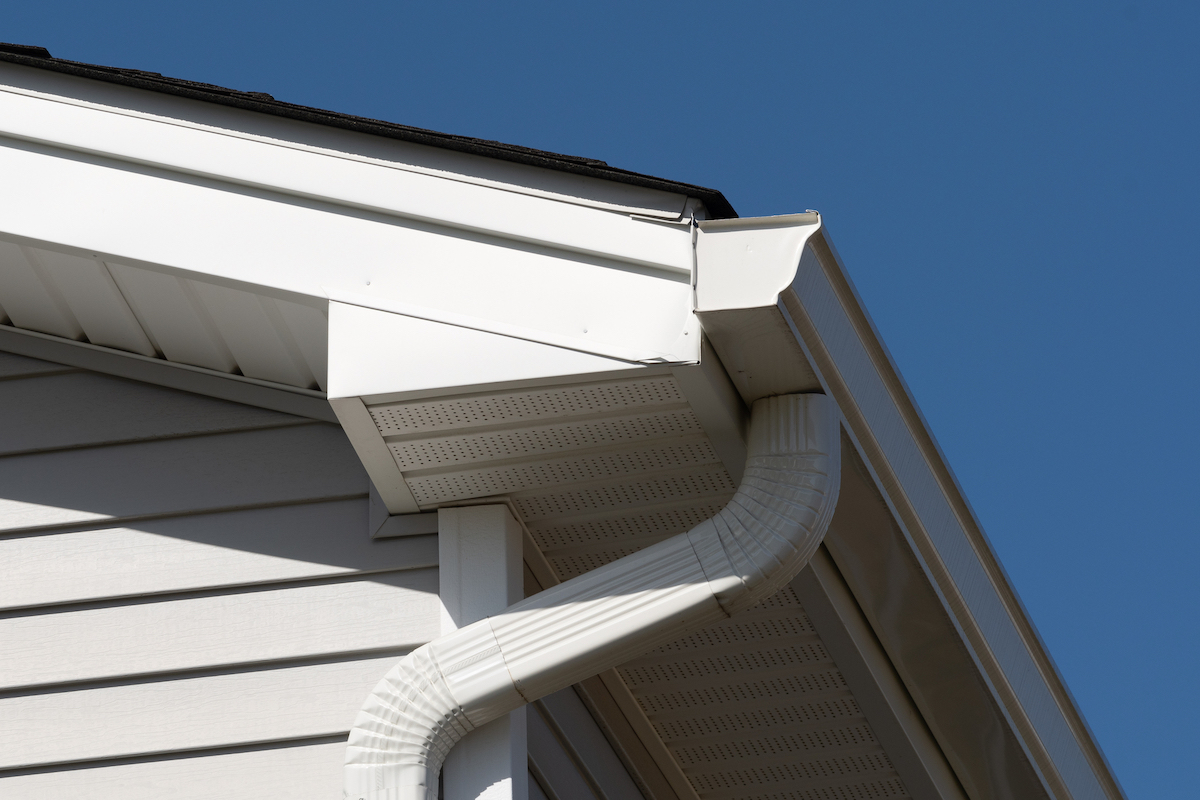
This is the most common type for homes built within the past 50 years, though many owners of older homes still install them today. Thanks to the flat back of the K-style gutter, you can nail it directly to the fascia board; no brackets required. But what really makes K-style gutters so popular is the typically decorative front side, which generally resembles crown molding. Thanks to their flat bottoms and straight, outwardly angled sides, K-style gutters usually can carry more water than half-round gutters, so they’re especially suited to rainy climates. On the downside, cleaning gutters in the K-design can be more difficult than cleaning half-round gutters, as the inner angles collect rotting debris.
Pros
- Easier installation
- More affordable than other types
- Decorative front designs
Cons
- Difficult to clean
Box Gutter
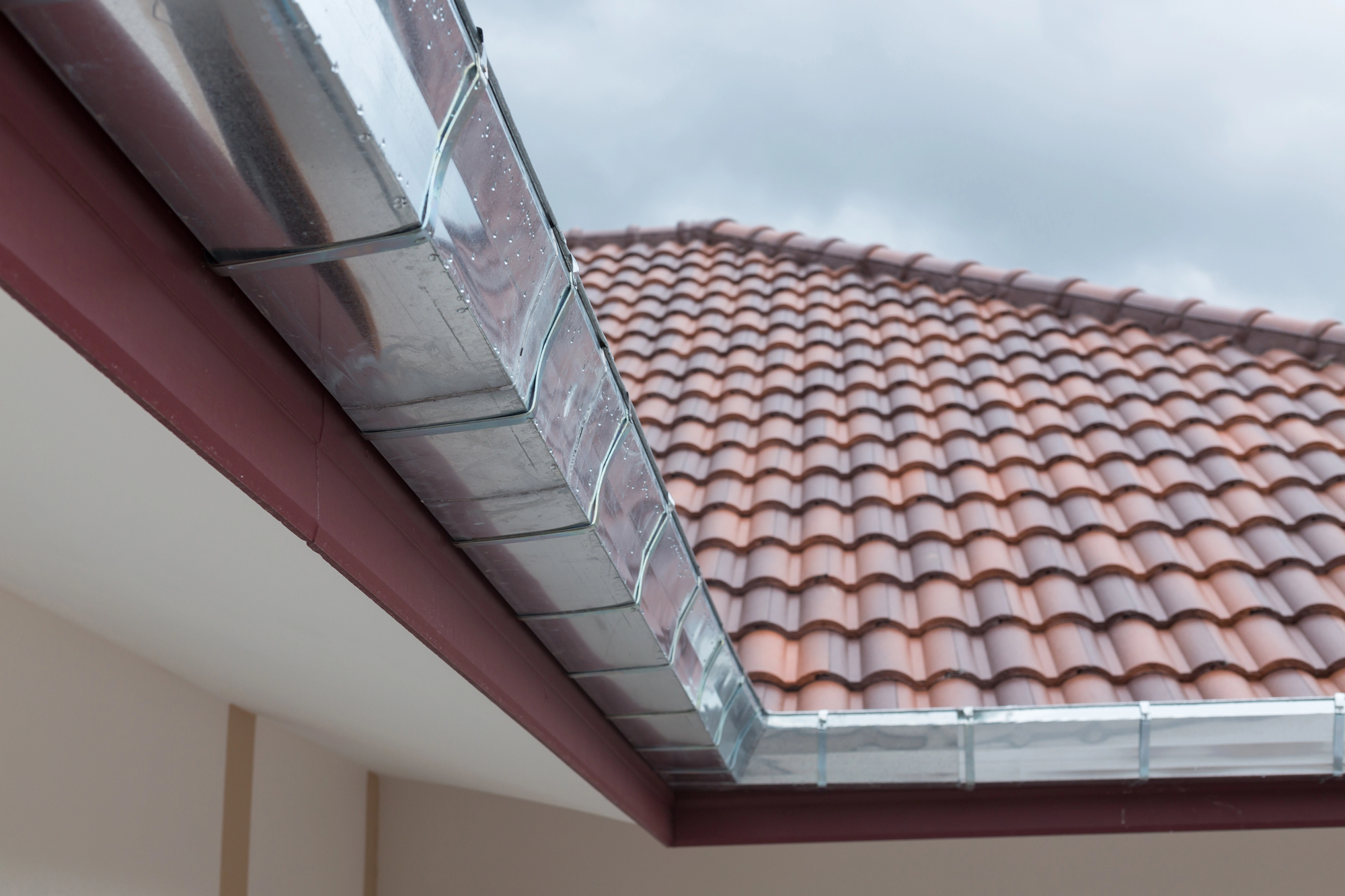
Box gutters are large, rectangular gutters typically installed between the roof’s edge and the house’s exterior wall or built into the roof structure itself. They are often used on commercial buildings or older homes with flat or slightly sloped roofs. Unlike traditional gutters, which hang off the edge of the roof, box gutters are designed to blend seamlessly into the architecture, making them less visible. Box gutters are among the rain gutter styles that can handle large amounts of water, making them ideal for areas with heavy rainfall.
Pros
- Can handle high water capacity
- Sleek, hidden design
- Customizable to your home’s roof
Cons
- Installation can be quite complicated
- More difficult to access for cleaning
- Can leak if not maintained correctly
Half-Round Gutter
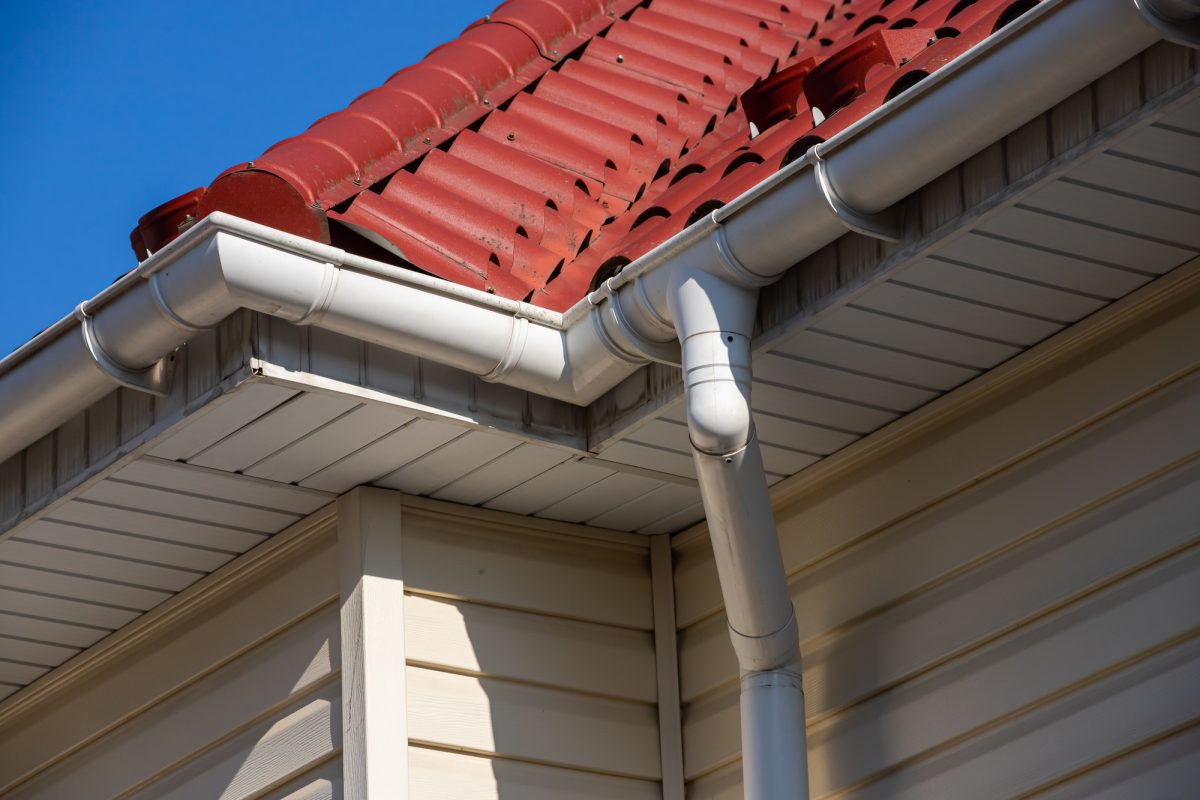
The open, trough-like shape of half-round gutters makes them prone to leaf and debris clogs, which is the reason many homeowners choose to install leaf guards. Their curved sides mean they don’t sit flush against the fascia boards, which is why brackets are usually required to keep them in place. While half-round gutters aren’t particularly decorative, they are the traditional style found on homes built prior to 1960; if you live in an older neighborhood or in a historic home, local ordinances might require this type of rain gutter.
Pros
- Carry water very effectively
- Attractive design; good curb appeal
- Can handle heavy rain
Cons
- Debris can collect easily without gutter guards
Fascia Gutter
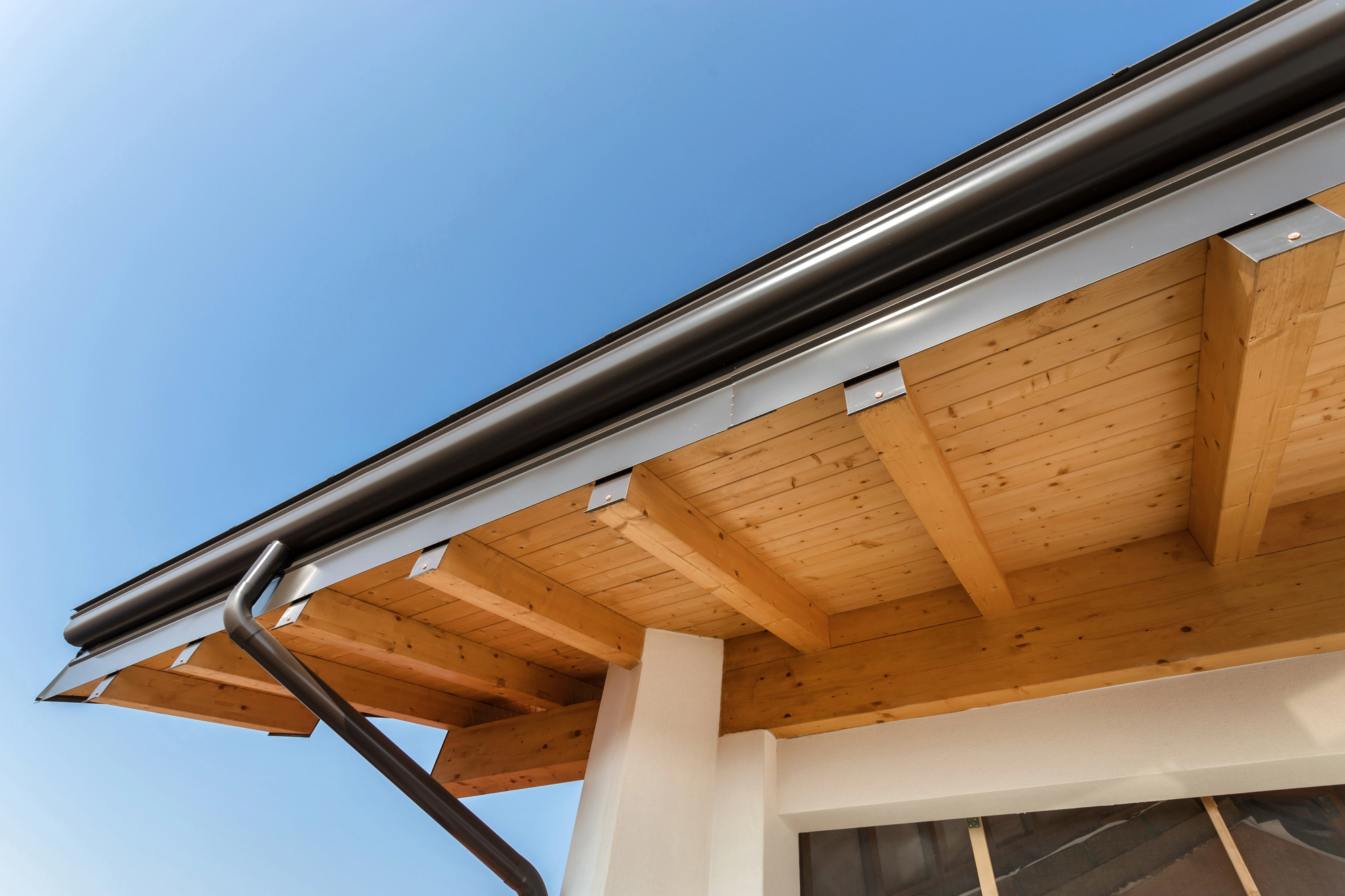
Unlike K-style or half-round gutters, fascia gutters aren’t sold in sections that fit together, leaving seams that are prone to rust and leaks. Instead, fascia gutters are custom built for the house out of one long stretch of aluminum. Fascia gutters are pricey and must be professionally installed; you can pay as much as twice for them as half-round or K-style gutters, which you could install yourself. This can add up to hundreds of dollars, depending on the size of your home.
Pros
- Sleek, contemporary look
- Custom fit to your house
- Made from durable materials
Cons
- Pricier than other styles
- Usually need to be professionally installed
Types of Gutter Materials
Wood, once the common material for constructing rain gutters, is prone to rot and weathering. So while you might still see wood gutters in very old, historically significant neighborhoods, today’s rain gutters are generally made from the following materials.
Aluminum
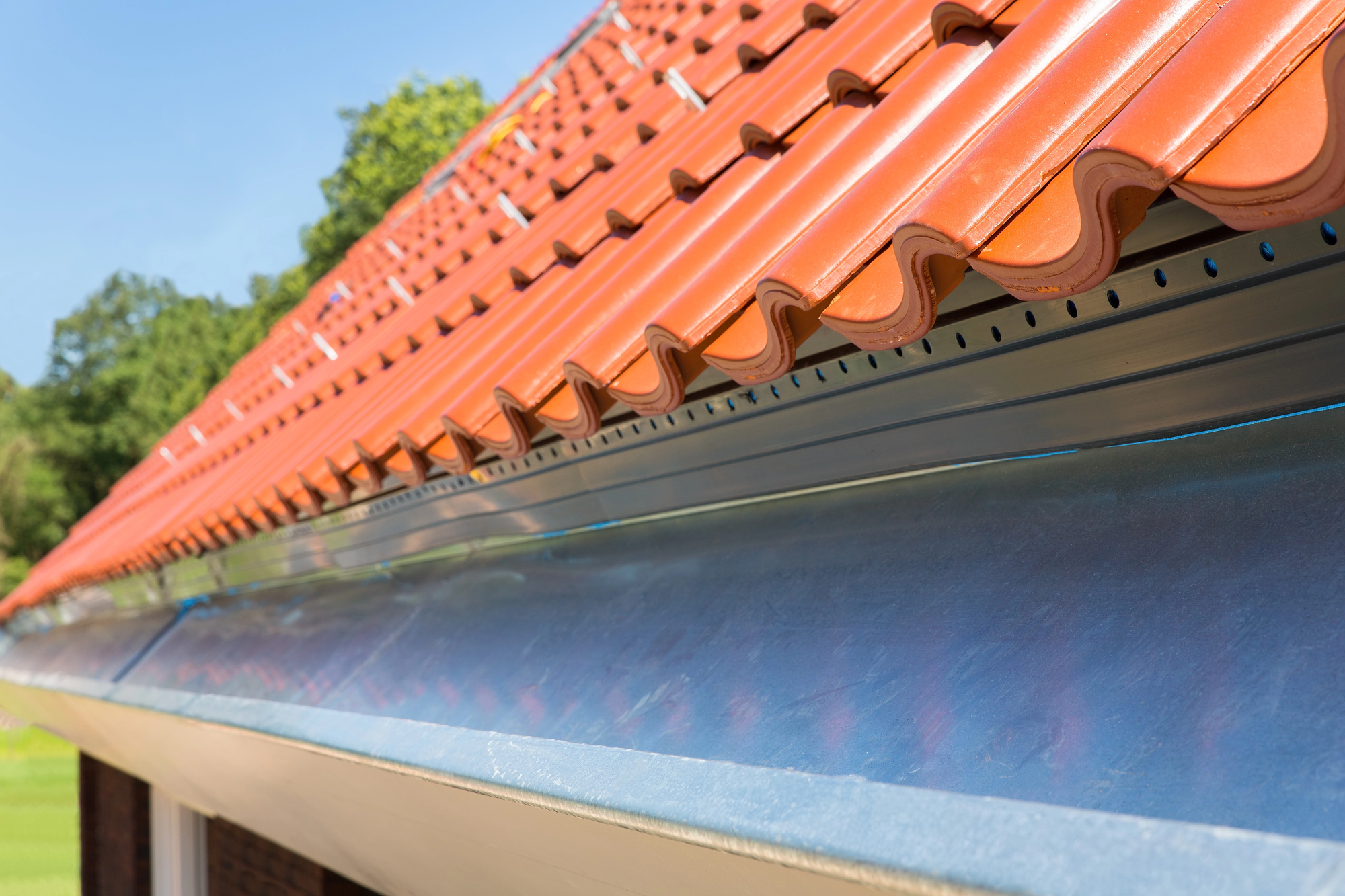
Aluminum gutters come in three standard thicknesses: .025 inch, .027 inch, and .032 inch. While the thinnest aluminum is the least expensive, it’s also likely to dent or bend; thicker metal is slightly pricier but generally worth the investment, particularly if you live in an area with heavy snowfall. You’ll find 10-foot lengths of aluminum gutters in most home improvement centers for DIY installation. Expect to pay around $1 to $5 per linear foot for DIY K-style aluminum rain gutters, and twice that if you have them professionally installed.
Pros
- Won’t rust
- Lightweight and easy to install
- Available in many colors and can also be painted
- Weatherproof
- Can last up to 25 years
Cons
- Can dent or bend
Vinyl

You’ll find vinyl gutters in a few different colors, and they can be painted to suit. Vinyl is the least-durable gutter material; you’ll typically get around 20 years’ use from vinyl gutters in climates that aren’t too severe. It’s also prone to fading in bright sunlight. Expect to pay around $1 to $3 per linear foot for DIY vinyl K-style rain gutters and up to $7 per linear foot for professionally installed gutters.
Pros
- Lightweight and inexpensive
- Can be painted
- Easy for DIY installation
- Not damaged by salty air
- Won’t corrode or rust
Cons
- Becomes brittle in high-heat climates and can crack when exposed to hard freezes
- Color fades with intense sun exposure
- Prone to cracking if a ladder is leaned against them
Zinc
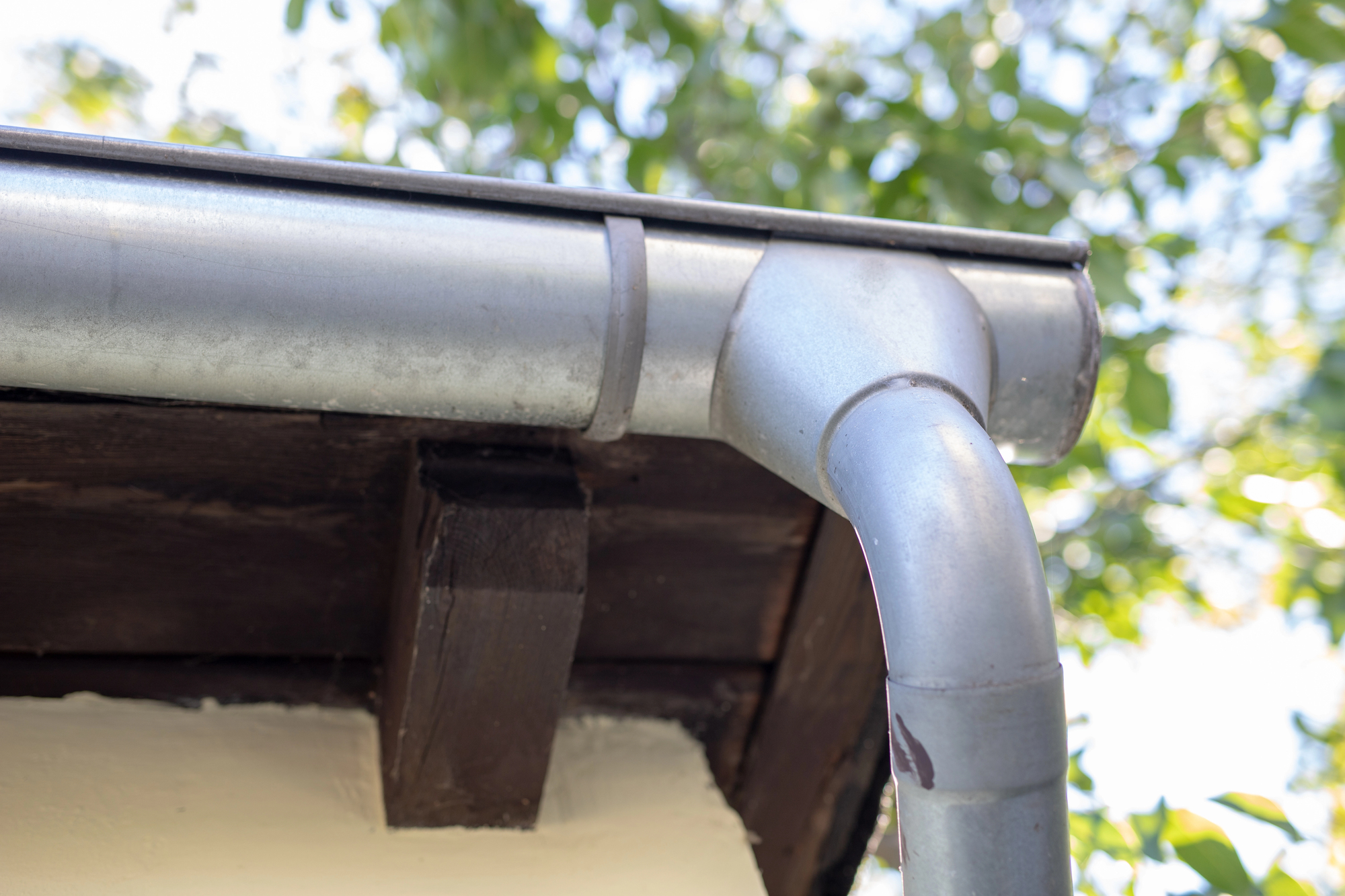
You can expect up to 50 years of use from your zinc gutters (somewhat less if you live near the ocean or anywhere else with salty air). Although they start off a dull gray, zinc gutters will develop an attractive patina over time. Zinc gutters require professional installation, as the joints and ends must be welded, and are usually only used on historic or high-end homes. Expect to pay around $30 to $30 per linear foot for professionally installed zinc rain gutters.
Pros
- Very long-lasting
- Won’t rust, warp, or fade
- Develops an attractive patina over time
Cons
- Expensive
- Not suitable for DIY installation
- Somewhat intolerant to salty air or acidic runoff from cedar-shingled roofs
Steel
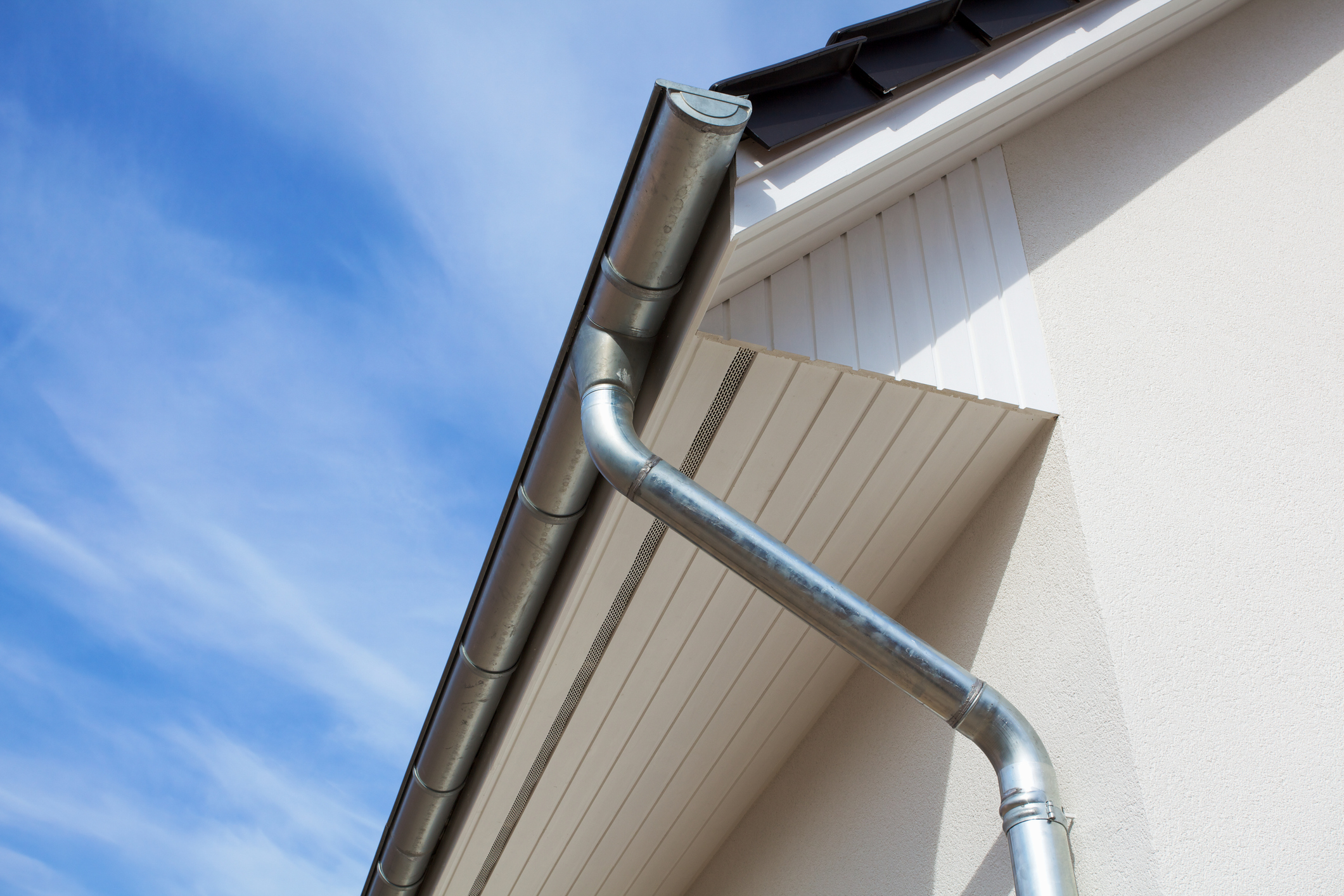
Most steel rain gutters are galvanized to increase rust resistance, but oxidation will generally still take hold within 10 to 15 years. And while gutter guards help extend the life of any type of rain gutter, they’re especially important with galvanized steel gutters, as sodden masses of fallen leaves speed the onset of rust. Stainless steel gutters won’t rust, but they’re considerably costlier than galvanized steel. Because steel gutters are quite heavy, DIY installation isn’t recommended. Expect to pay around $8 to $20 per linear foot for professionally installed galvanized steel gutters, and nearly twice that for stainless steel.
Pros
- Very strong
- Holds up to all types of weather
- Can be painted
Cons
- Prone to rust
- Not DIY-friendly
- Heavy
Copper
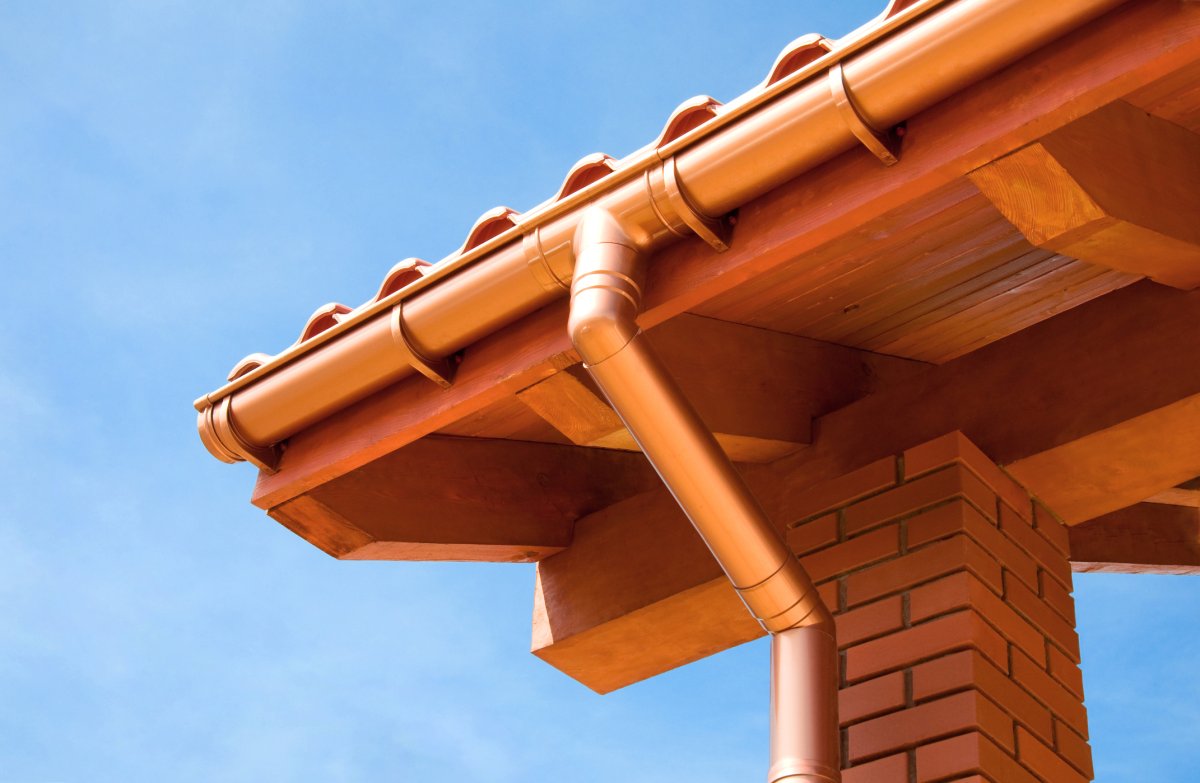
Many homeowners feel that weather-worn copper offers an old-world appearance. And though copper is extremely durable–it’s unfazed by any weather condition from highest heat to coldest freeze–it’s also the priciest type of rain gutter, and installing it isn’t something you DIY. Generally used only on high-end homes, copper rain gutters can last up to 100 years if they’re properly installed and welded. Expect to pay as much as $15 to $40 per linear foot for professionally installed copper gutters.
Pros
- Beautiful glow that eventually develops a greenish patina
- No need for painting
- Extremely durable in all types of weather
- Won’t rust or warp
Cons
- Very expensive
- Not DIY-friendly
Which Type of Gutter is Best for Your Home?
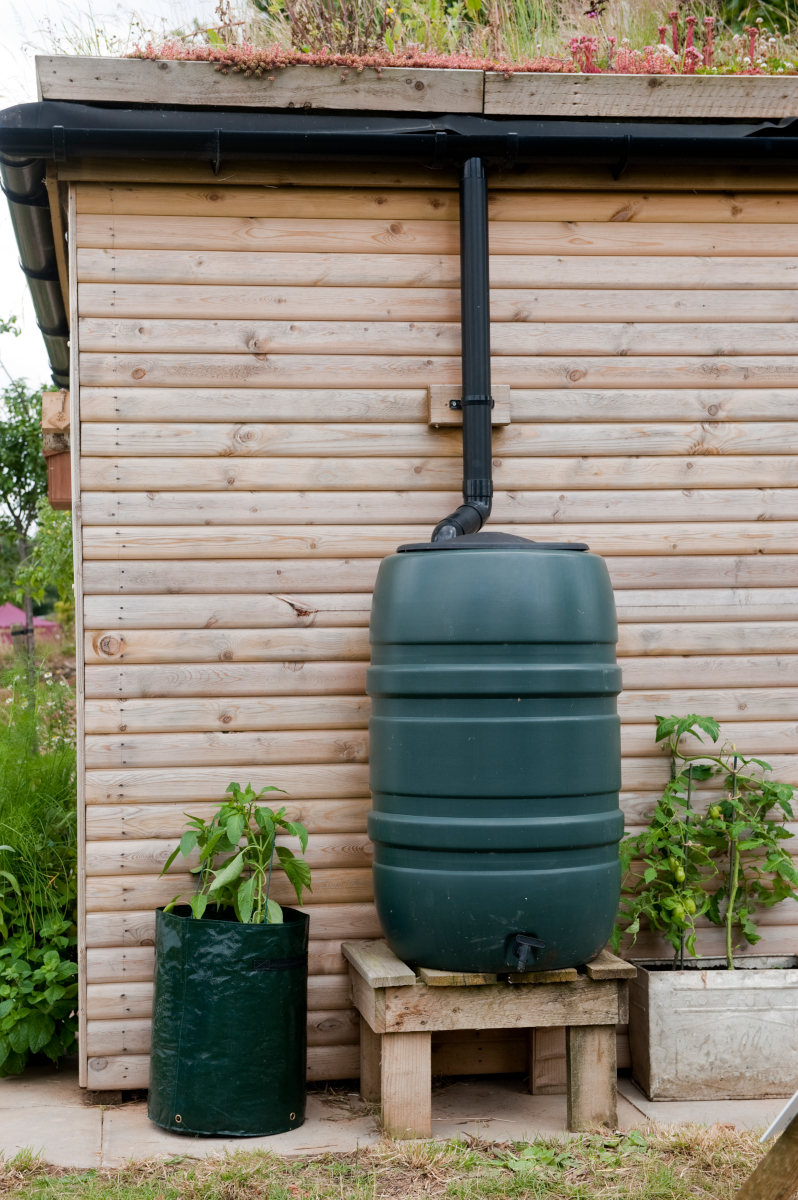
There’s a lot to consider when choosing the best type of gutter for your home, including your local climate, roof design, and aesthetic preferences.
- If you live in a region with heavy rainfall, high-capacity options like box or K-style gutters may work best, as they can handle large volumes of water.
- If you have milder weather or live in a historic home, half-round or copper gutters can complement the architecture while providing plenty of drainage.
Choice of material is equally important. Aluminum is popular due to its durability and affordability, so it’s suitable for most homes.
- Steel and copper gutters last longer and offer a premium look, but come at a higher price point.
- For homeowners looking for minimal maintenance, a seamless gutter can reduce the risk of leaks and clogs, while gutter guards can help minimize upkeep needs.
Ultimately, consider your budget, home style, and climate conditions when choosing the right gutters to ensure lasting protection and great curb appeal.
Gutter Accessories to Consider
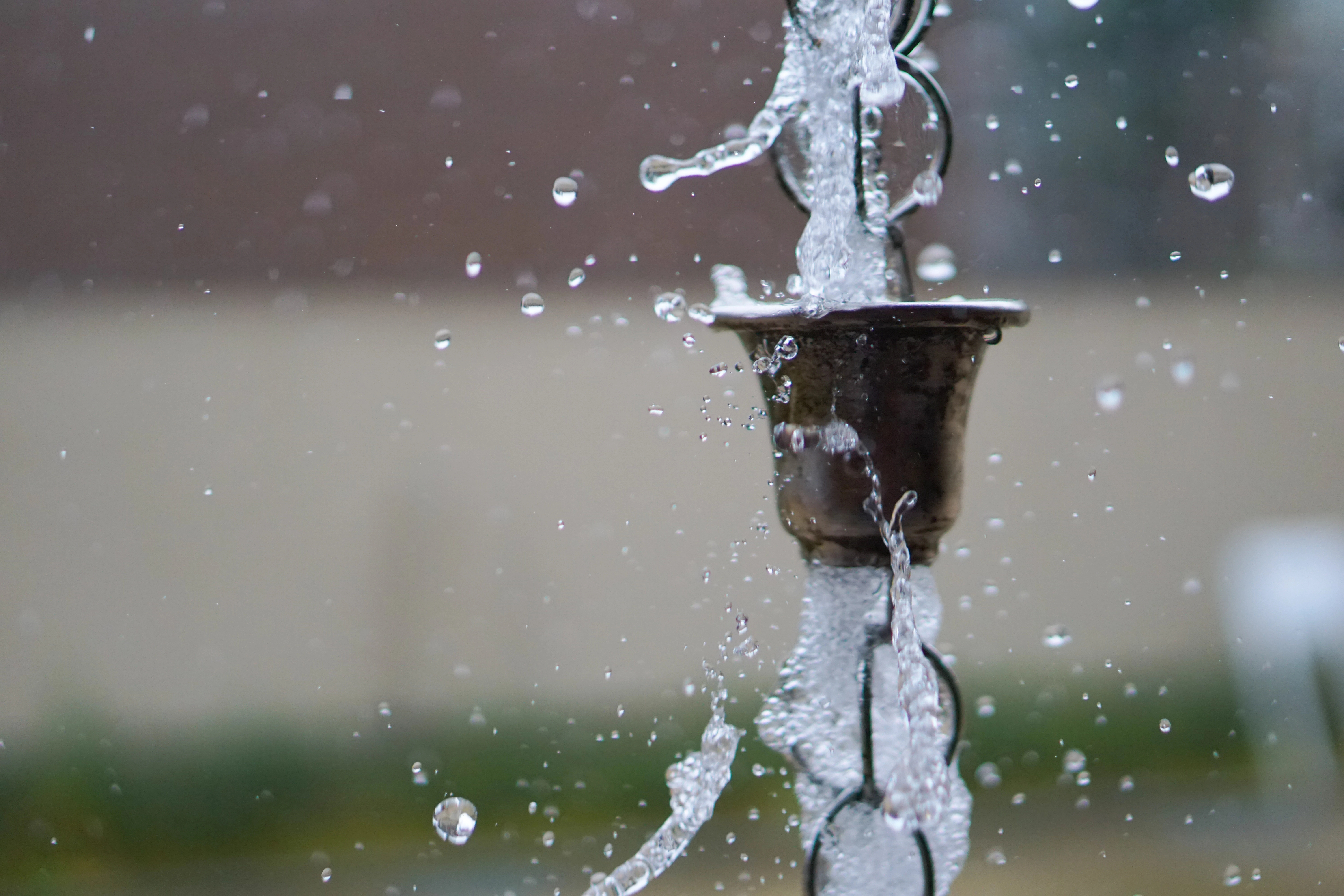
Enhancing your gutter system with the right accessories can improve its performance, reduce maintenance, and add visual appeal. A few popular gutter accessories include:
- Gutter guards: Mesh or screen covers that prevent leaves and debris from clogging gutters, reducing the need for frequent gutter cleaning.
- Downspout brackets: Secure downspouts to the exterior walls of your home, providing stability and preventing sagging or detachment.
- Cleaning tools: Specialized tools like gutter scoops or telescopic wands help make gutter cleaning easier and safer, especially for hard-to-reach areas.
- Rain chains: Decorative alternatives to downspouts that guide rainwater in a visually appealing way, often used to complement a home’s exterior design.
- Splash blocks: Positioned at the base of downspouts, these direct water away from your foundation, preventing erosion and water damage.
FAQs
The cost to install gutters depends on the gutter material. Vinyl gutters cost about $3 to $5 per linear foot; aluminum gutters cost between $6 and $12 per foot to install. Copper can run as much as $40 per foot for installation. Complicated architectural or structural features can increase costs.
It depends on the material the gutter is made from. Vinyl gutters last only about 10 years, while copper gutters can last 100 years. Gutters made of the most commonly used material, aluminum, last about 25 years.
Sagging gutters can be fixed in a couple ways. First, check that your spikes are still tight; tighten or replace loose spikes. You can also fit gutter hangers in the affected areas, or tighten the screws on existing hangers that may have become loose.
You can. Many homeowners choose to replace the gutters when they get a new roof, but it is not necessary. Check with your roofer; sometimes they make assumptions, and you’ll want to be on the same page before work begins.
Not if you have the right DIY experience for the job! That said, rain gutter types, like seamless, box, and fascia gutters—as well as any copper gutter—are complicated and should be installed by a professional.
Five inches is the most common gutter size. For areas with heavier rainfall, homeowners can choose 6- or 7-inch gutters to handle higher water volumes.
Seamless gutters are made with a single piece of material, so don’t have any joints or seams. These do not require sealants, because there’s nothing to seal.
